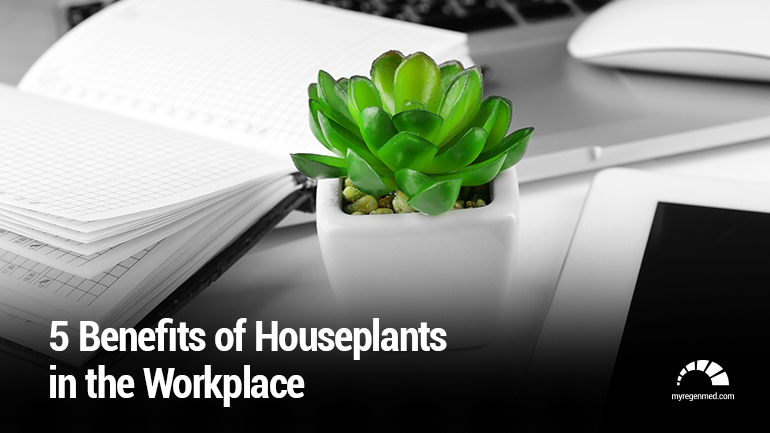
When you embellish interior spaces with houseplants, you’re not just adding greenery. These living organisms interact with your body, mind and home in ways that enhance the quality of life.
Breathing Easier
When you breathe, your body takes in oxygen and releases carbon dioxide. During photosynthesis, plants absorb carbon dioxide and release oxygen. This opposite pattern of gas use makes plants and people natural partners. Adding plants to interior spaces can increase oxygen levels.
At night, photosynthesis ceases, and plants typically respire like humans, absorbing oxygen and releasing carbon dioxide. A few plants – orchids, succulents and epiphytic bromeliads – do just the opposite, taking in carbon dioxide and releasing oxygen. Place these plants in bedrooms to refresh air during the night.
Releasing Water
As part of the photosynthetic and respiratory processes, plants release moisture vapor, which increases humidity of the air around them. Plants release roughly 97 percent of the water they take in. Place several plants together, and you can increase the humidity of a room, which helps keeps respiratory distresses at bay. Studies at the Agricultural University of Norway document that using plants in interior spaces decreases the incidence of dry skin, colds, sore throats and dry coughs.
Purifying Air
Plants remove toxins from air – up to 87 percent of volatile organic compounds (VOCs) every 24 hours, according to NASA research. VOCs include substances like formaldehyde , benzene and trichloroethylene . Benzene is commonly found in high concentrations in study settings, where books and printed papers abound.
The NASA research discovered that plants purify that trapped air by pulling contaminants into soil, where root zone microorganisms convert VOCs into food for the plant.Modern climate-controlled, air-tight buildings trap VOCs inside.
Improving Health
Adding plants to hospital rooms speeds recovery rates of surgical patients, according to researchers at Kansas State University. Compared to patients in rooms without plants, patients in rooms with plants request less pain medication, have lower heart rates and blood pressure, experience less fatigue and anxiety, and are released from the hospital sooner.
The Dutch Product Board for Horticulture commissioned a workplace study that discovered that adding plants to office settings decreases fatigue, colds, headaches, coughs, sore throats and flu-like symptoms. In another study by the Agricultural University of Norway, sickness rates fell by more than 60 percent in offices with plants.
Sharpening Focus
A study at The Royal College of Agriculture in Circencester, England, found that students demonstrate 70 percent greater attentiveness when they’re taught in rooms containing plants. In the same study, attendance was also higher for lectures given in classrooms with plants.
How Many Plants?
The recommendations vary based on your goals.
To improve health and reduce fatigue and stress, place one large plant (8-inch diameter pot or larger) every 129 square feet. In office or classroom settings, position plants so each person has greenery in view.
To purify air, use 15 to 18 plants in 6- to 8-inch diameter pots for an 1,800-square-foot house. That’s roughly one larger plant every 100 square feet. Achieve similar results with two smaller plants (4- to 5-inch pots).
Remember that for the best success with any houseplant, you need to match the right plant to the right growing conditions. Learn more in Tips for Healthy Houseplants. For low light situations, choose a plant adapted to those conditions.